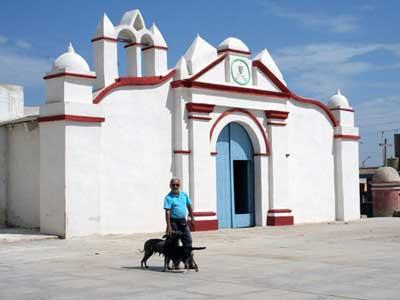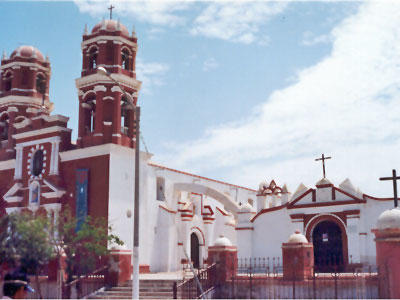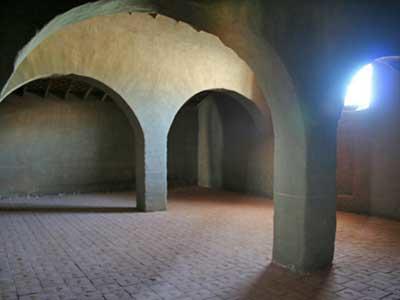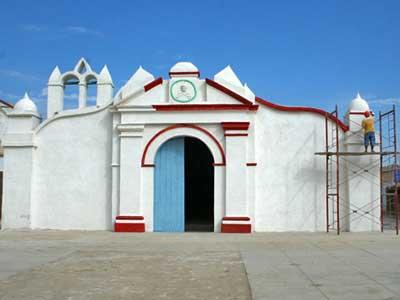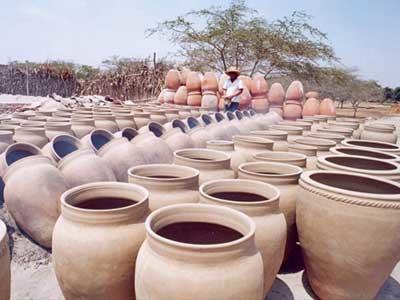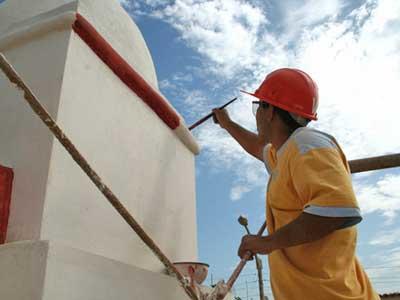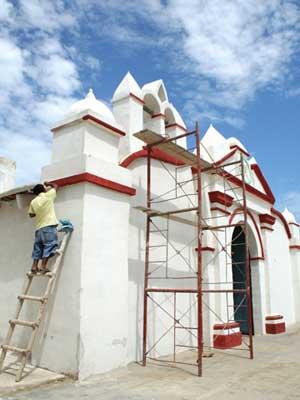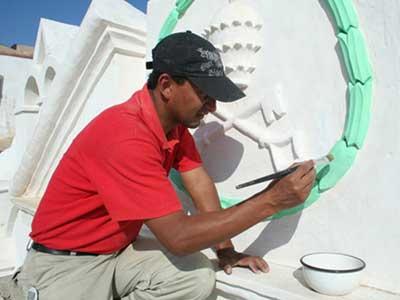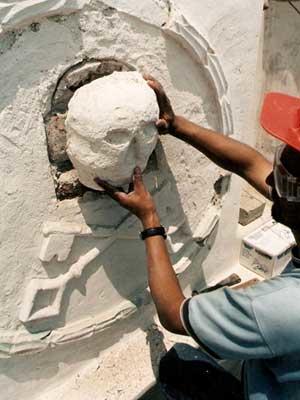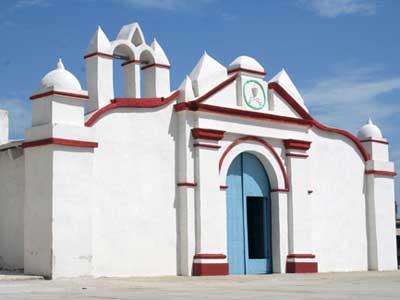San Pedro de Mórrope Chapel
The chapel of San Pedro de Mórrope was constructed in the 16th century during the Colonial period in Peru in an effort to convert the indigenous Mochica people to Christianity. The chapel is a rare surviving example of rural, colonial Andean architecture in the region. The building was constructed using pre-Hispanic methods and traditional materials, including adobe, plaster-coated carob tree trunks, reeds, and quincha, a mud-covered wood cane. The chapel has a rectangular plan with a single nave, and contains a small, open-air apsidal chapel behind the main altar wall. The main altar is in the form of a stepped pyramid, similar to the 1,700-year-old Moche burial mound in Sipán, a few kilometers to the west. The chapel is part of a larger 17th-century complex of a church and convent. Due to the chapel’s remote coastal location, it is continuously subjected to extreme weather conditions including high humidity, which had resulted in biological growth and insect infestation, damaging the structure. Torrential rains damaged the roof, eroded the exterior plaster coating on the building, and weakened the adobe walls through rising damp. Many of the architectural features, including the arches at the nave, have been lost.
2002 World Monuments Watch
San Pedro de Mórrope was listed on the 2002 Watch. In 2003, WMF contributed funds for the conservation of the surviving architectural elements in the church, including the original clay tile floor and historic murals. WMF provided more funding in 2006, with the Instituto Americano de Investigacion y Conservacion ICAM serving as project partner. WMF’s contribution included installing glass covers over ancient tombs located beneath the floor of the church, which were discovered during conservation work. Other contributors to the conservation efforts included the Gobierno Regional de Lambayeque, the Municipalidad del Distrito de Mórrope, the Instituto Nacional de Cultura, and numerous private donors. A training program was developed for the local community to address preventive preservation measures and tourism management and an interpretation center was established at the site. Advocacy for improved protection and long-term stewardship was part of an overall campaign to raise awareness about the importance of the church and its legacy.
The church was reopened to the public for tours after the restoration project was completed. It is the most representative example of indigenous traditional architecture on the north coast of Peru, and is now being promoted as a regional tourist destination. The project served to revive the cultural identity of the native Mochica community as well as inform visitors about the church’s importance.

